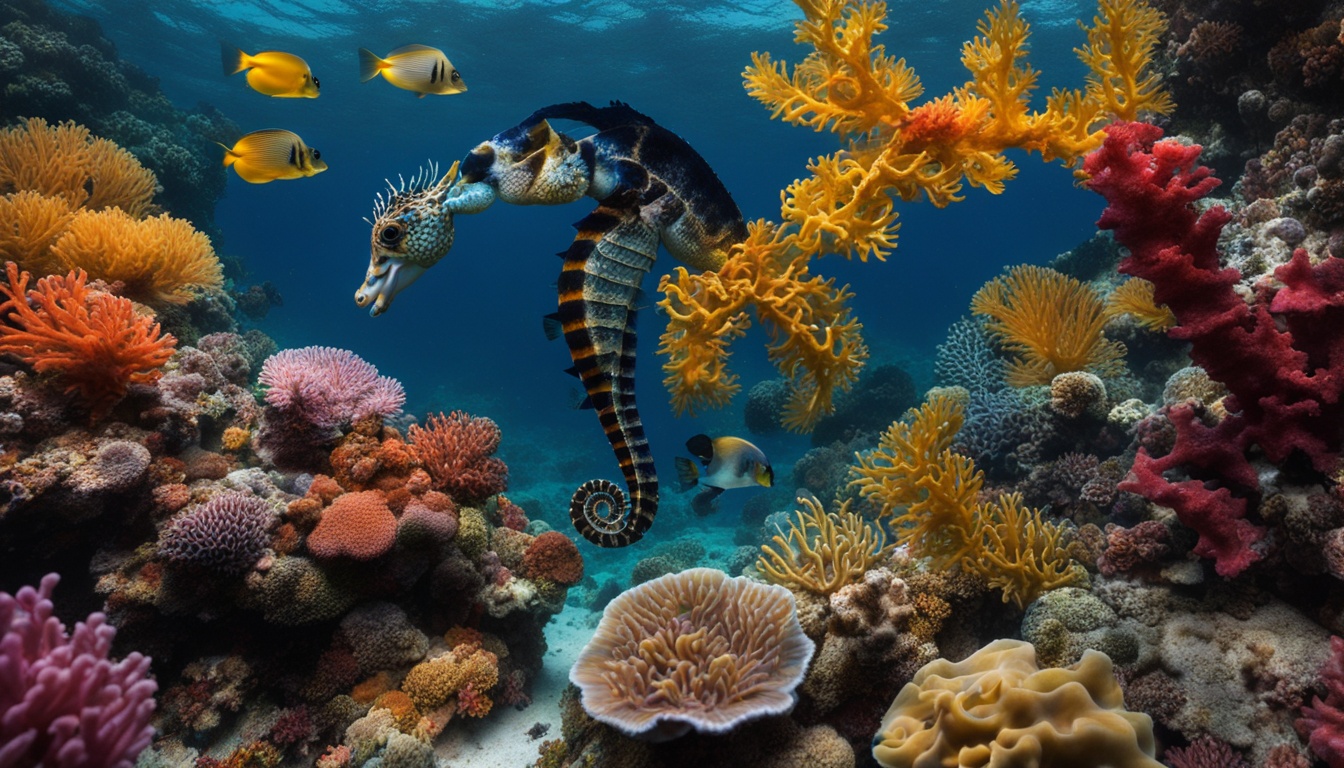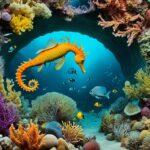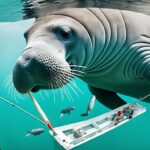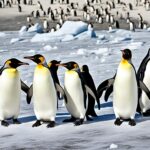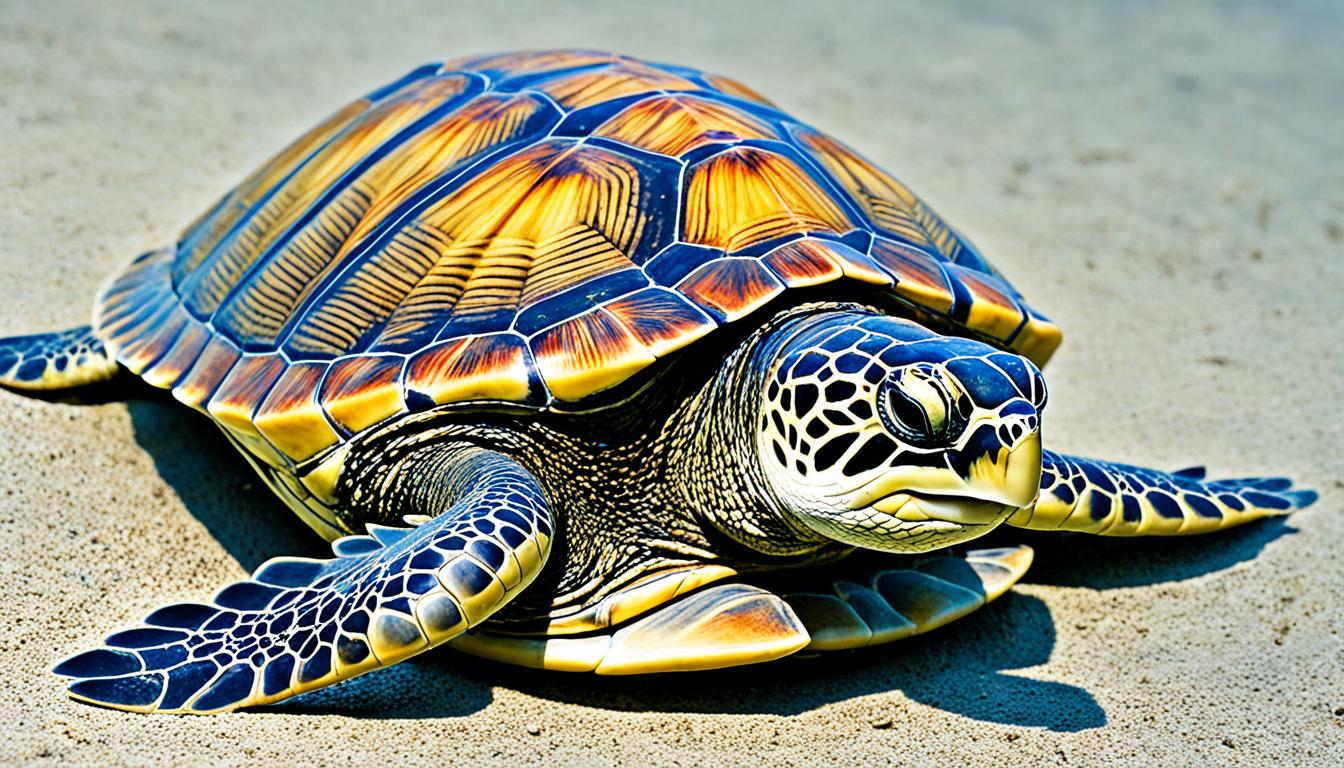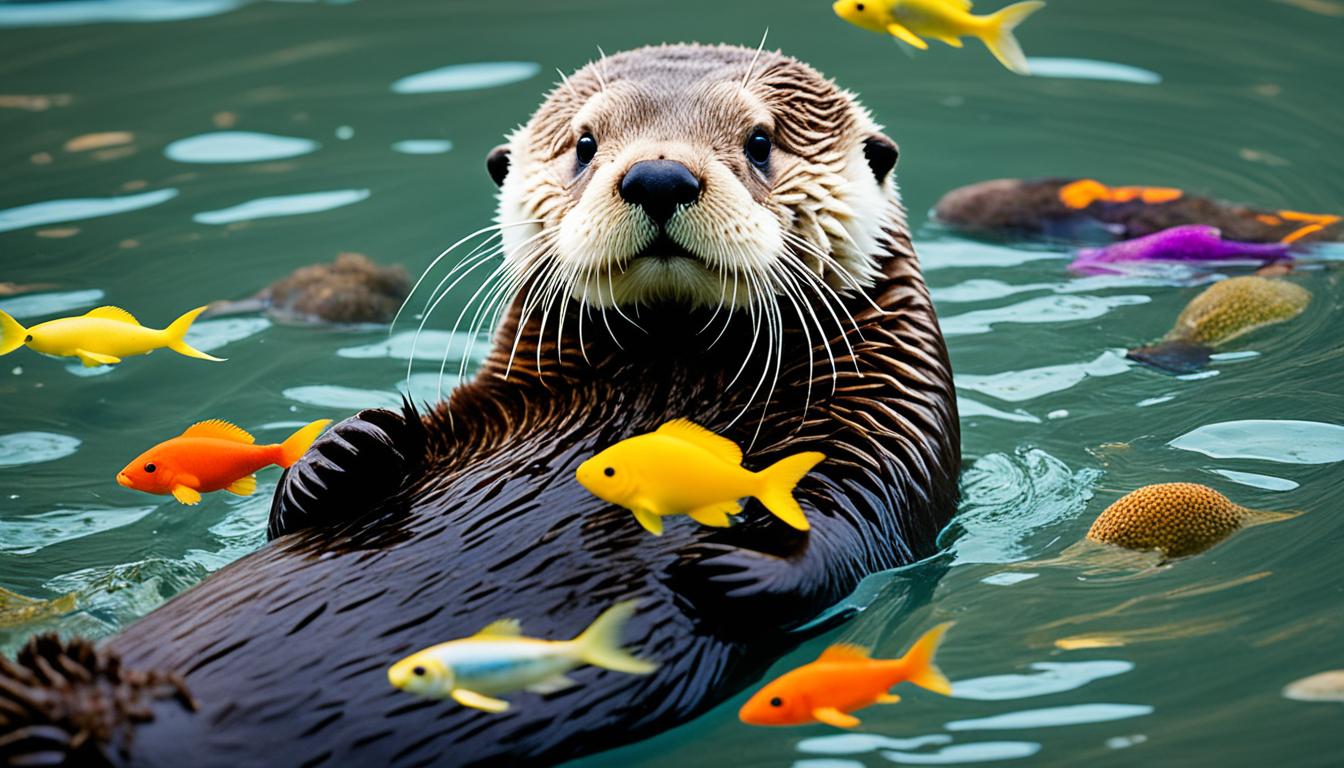Seahorses play a key role in marine ecosystems. They show us how complex these underwater worlds can be. By studying their behavior, we learn about their place in the food web and their impact on the ocean.
Seahorses are both hunters and hunted, making them vital to their ecosystems. Their unique ways of interacting with other sea creatures help us understand the delicate balance of the ocean. Let’s dive into how seahorses interact with others and why it matters for the health of our oceans.
The Importance of Seahorses in Marine Ecosystems
Seahorses are key players in marine ecosystems. They balance predator and prey interactions, keeping their habitats healthy. Their biology shows how they affect different parts of the ecosystem.
Seahorses as Predators and Prey
Seahorses eat small crustaceans and invertebrates, having 30 to 50 meals a day. This makes them important consumers in their homes. They keep their prey populations under control.
But, they also face threats from fish, turtles, and seabirds. Losing seahorses can upset the balance in their homes. This can change the lives of many marine animals.
Impact on Habitat Diversity
Seahorses live in places like mangroves, coral reefs, and seagrass beds. They help make these places more diverse and healthy. By sticking to different spots, they help keep the area stable for other sea creatures.
Studies show that where there are more seahorses, the ecosystem is more lively. This shows how vital seahorses are for a healthy sea life.
Seahorse Behavior: How They Engage with Their Environment
Seahorses show us how they live in their underwater world. They have special ways of interacting with each other and adapting to their surroundings. These creatures have unique social lives and survival skills.
Social Structures and Territoriality
Seahorses live in complex social groups. Males have their own areas, about 10 square feet, which they protect. Females move around more, visiting different males during breeding season. This shows how seahorses have both friendly and competitive behaviors.
When they mate, seahorses perform beautiful dances and change colors. These actions help strengthen their bonds and mark their territory. Watching them helps us understand their social lives better.
Adaptations for Camouflage
Seahorses are experts at hiding. They can change color and have skin that looks like their surroundings. This helps them stay hidden from predators.
They use their tails to hold onto plants, staying still to avoid being seen. These skills show how they’ve evolved to survive and fit into their ecosystem.
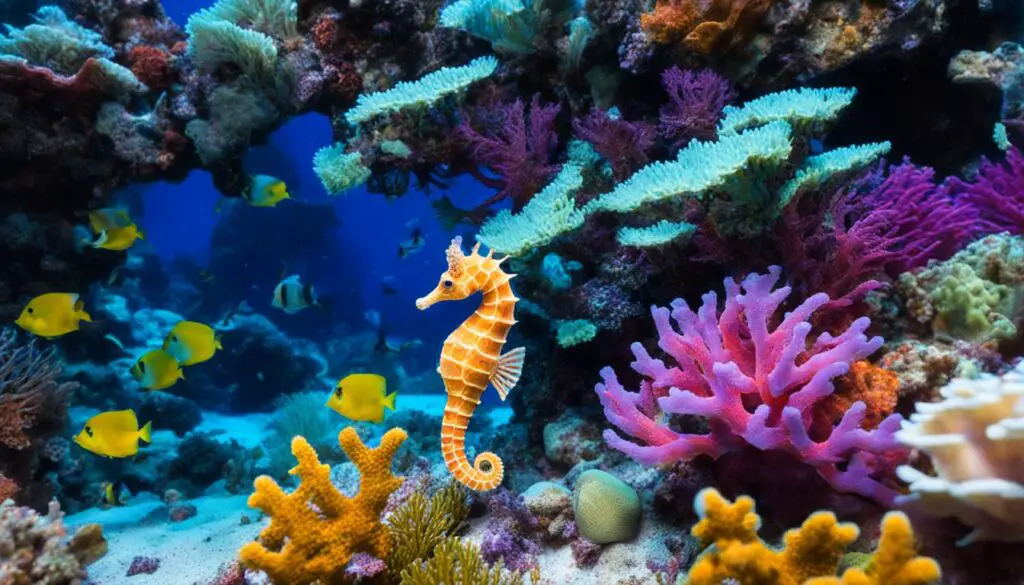
| Aspect | Description |
|---|---|
| Social Structures | Males defend territories; females are more mobile. |
| Courtship Rituals | Color changes and spiral dances strengthen pair bonds. |
| Camouflage | Color changing and skin filaments for blending with surroundings. |
| Predation Evasion | Motionlessness and gripping with prehensile tails enhance survival. |
How do seahorses interact with other marine life?
Seahorses have interesting ways of interacting with other sea creatures. They form bonds with sea plants and avoid predators. These actions help them survive and support the ocean’s health.
Mutualistic Relationships with Marine Flora
Seahorses hide among sea grasses and corals. This helps them stay safe from danger. They blend in well, making it hard for predators to find them.
In return, seahorses help keep their home healthy. They keep the sea plants in good shape, which helps many other sea creatures. This balance is key to a healthy ocean.
Interactions with Predators
Seahorses and their predators have a big impact on each other. Seahorses are eaten by many sea animals, but they have ways to avoid being caught. They can change color to hide, which helps them stay safe.
They are also small and have a special body shape. This makes it harder for predators to catch them. Learning about these relationships helps us understand how seahorses survive in the ocean.
| Aspect | Details |
|---|---|
| Mutualistic Relationships | Seahorses use marine flora for camouflage and protection. |
| Importance to Ecosystem | They help maintain biodiversity by supporting various organisms. |
| Predation | Primary threats include fish and larger marine mammals. |
| Adaptations | Camouflage and physical characteristics aid in evasion of predators. |
The Role of Seahorses in Coral Reefs and Seagrass Beds
Seahorses play a big part in their homes, like coral reefs and seagrass beds. These places give them safety from predators and the food they need to live and have babies. By learning about where they live and what they like, we see how these small fish do well in the ocean.
Habitat Preferences and Home Ranges
Seahorses love living in seagrass beds and coral reefs. These spots offer them lots of hiding spots and food. The pygmy seahorse, for example, has a special spot in these places that it calls home. Knowing what they like helps us protect their homes and the ocean.
Seahorse Relationships with Other Species
Seahorses have many friends in the ocean, like algae, seaweeds, and other fish. These friends help make coral reefs and seagrass beds healthy and full of life. Seeing how seahorses work with these friends shows why we must protect their homes. Keeping their homes safe helps the whole ocean stay healthy and lets seahorses keep living where they belong.

